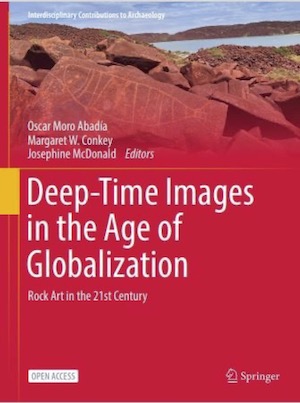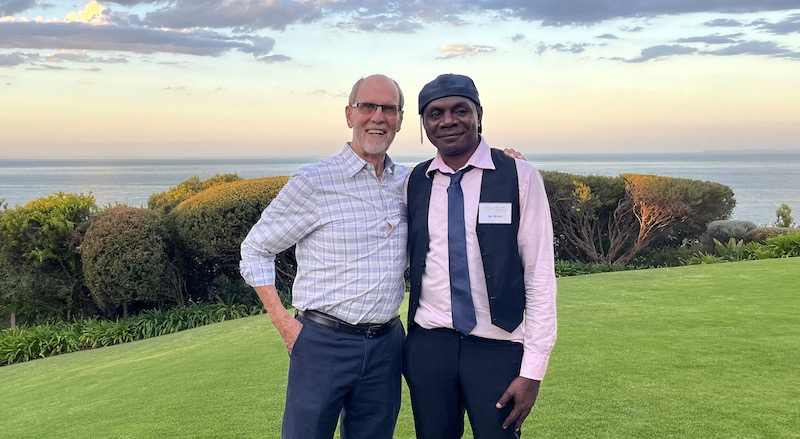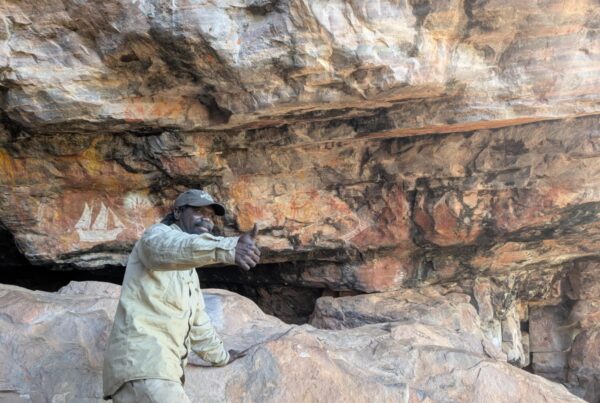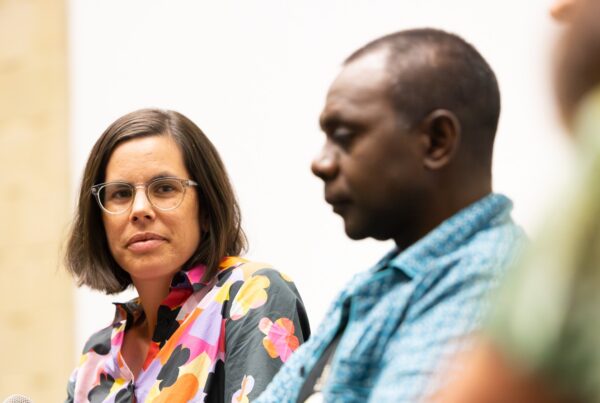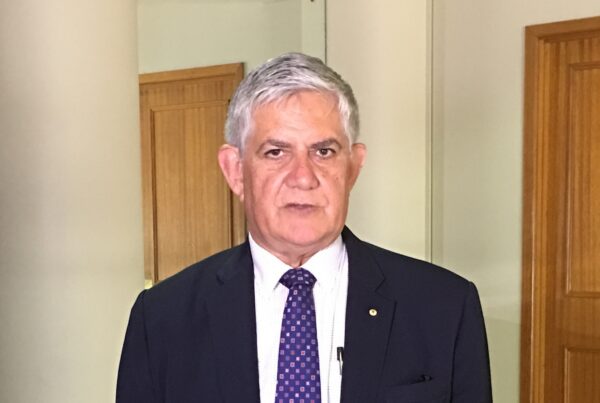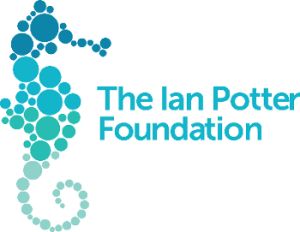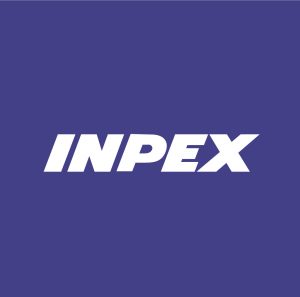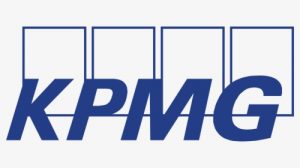Welcome to Rock Art Australia’s Winter Newsletter
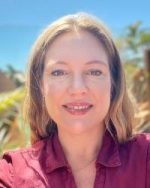 Firstly on behalf of Rock Art Australia we wish to thank Liz Vaughan for her contribution to the organisation.
Firstly on behalf of Rock Art Australia we wish to thank Liz Vaughan for her contribution to the organisation.
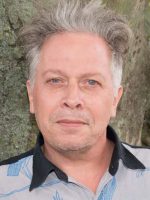 We also bid farewell to Professor Joakim Goldhahn from RAA’s Science Advisory Council. Professor Goldhahn resigned from the University of Western Australia as Rock Art Australia’s Ian Potter Kimberely Chair in Rock Art Research in January 2024.
We also bid farewell to Professor Joakim Goldhahn from RAA’s Science Advisory Council. Professor Goldhahn resigned from the University of Western Australia as Rock Art Australia’s Ian Potter Kimberely Chair in Rock Art Research in January 2024.
Professor Goldhahn will continue working on the Australian Research Council project Art at a Crossroads through the University of Adelaide. We thank Professor Goldhahn for his contribution and wish him all the best.
Best wishes,

Samantha Hamilton I CEO
Rock Art Australia welcomes new Science Advisory Council members
We are delighted to announce the appointment of seven new members to our Science Advisory Council (SAC). Rock Art Australia is underpinned by this council comprising eminent scientists from tertiary institutions across Australia who advise the RAA Board on the organisation’s long term research program.
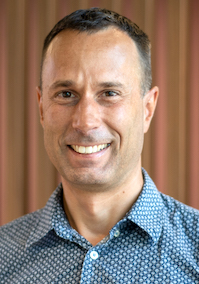
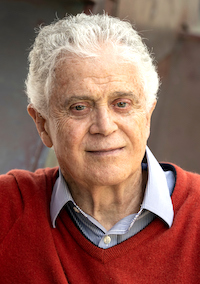
The Kimberley studies focused on the preservation mechanism of Wandjina paintings. The premise that nothing happens in the dry season and that all the action was in the wet was shown to be false. It was possible to measure the heat of adsorption and desorption of water from rocks in the Napier Ranges. Plant metabolites producing oxalate ions changed the vivid white pigment huntite into a more chemically stable form that stopped exfoliation. The surfaces of engraved rocks in Murujuga has been studied periodically for 18 years utilising surface pH, chloride ions and redox potentials to establish the complex decay and preservation mechanisms of the art work. Applied electrochemistry has shown that the rock surfaces are alive and respond to changes in moisture and the accumulation of sea salts.
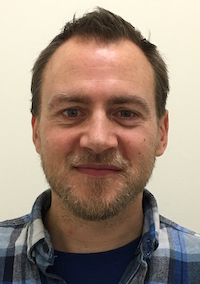
As a Chief Investigator in the ARC Centre of Excellence for Indigenous and Environmental Histories and Futures, Ray will increasingly focus on codesigned interdisciplinary studies that interweave genetic data from non-human organisms and sediments with Indigenous knowledges to build detailed records of changing ecological systems, track anthropogenic impacts across time, and spur collaborative efforts to manage and restore country.
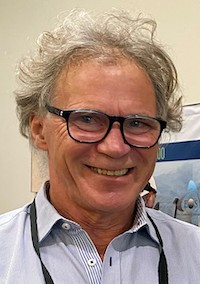
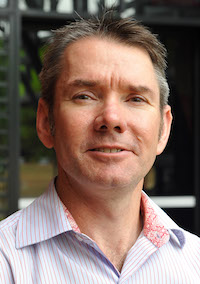
Sean is highly regarded for his coordination of large-scale, multidisciplinary projects in partnership with Indigenous communities investigating people-land-sea relationships across Australia. His team-based approach to tackling persistent research questions in close collaboration with Indigenous communities, government, and industry, and his multiauthored approach to publication, are hallmarks of his research. His publications include more than 150 refereed articles on the archaeology of Australia and 5 books. Sean has conducted research in Australia, Honduras, Chile, Papua New Guinea and the Pacific.
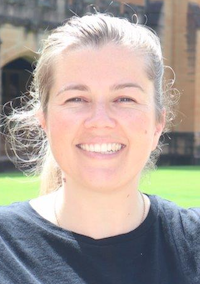
Dr Jones’ research focus centres on Aboriginal rock art, Australian Aboriginal and Pacific ethnographic material culture, museum collections, and the history of archaeology. Her research highlights the globally significant narratives of ancient ritual behaviours in Aboriginal Australia and how Indigenous Australians mobilised rock art as an effective social signalling, communications and knowledge transfer tool in the past. It also highlights the diverse and innovative cultural practices used by Indigenous Australians in the production and representation of rock art and material culture, its geographic distribution and antiquity. Her research is motivated by a mission to inform a wider appreciation of Australian Indigenous culture in Australian public culture. It aims to action reconciliation principles by closing the gap through creating opportunities for Indigenous Australians to develop community-based research projects that prioritise Indigenous sovereignty of intellectual property and create opportunities for education, training and economic development for local communities.
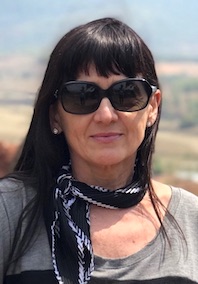
Dr Louise Shewan is an interdisciplinary researcher with current research projects in agricultural traceability to fingerprint Australian wine to define provenance and authenticity, in forensic science (Australian Facility for Taphonomic Experimental Research facility) and has long-standing interdisciplinary collaborations with Engineering (remote sensing in post-conflict environments) and the Faculty of Arts (cultural conservation). She has also led community health projects in rural Cambodia alongside her archaeological research.
RESEARCH PROJECT UPDATES
Before and after the Last Ice Age: GunaiKurnai archaeology along the Snowy
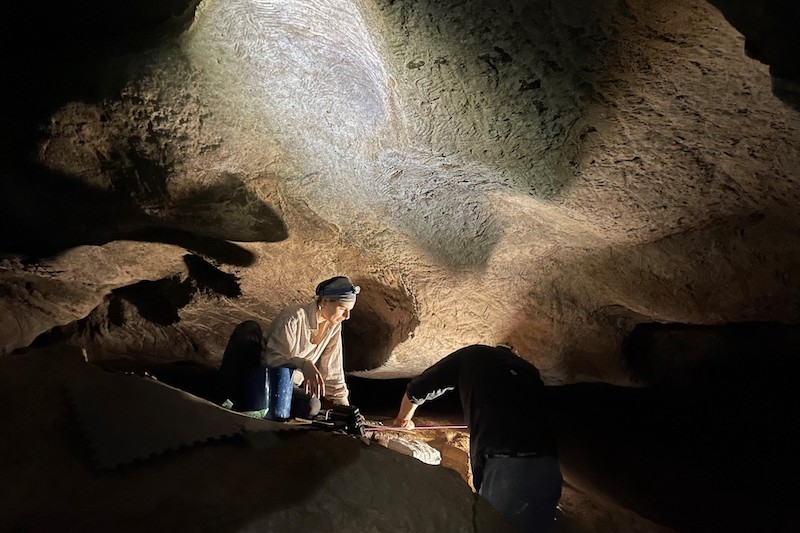
The lit rock ceiling in the limestone cave is covered with ancient finger grooves. Dr Madeleine Kelly (rock art recording) and A/Professor Mike Morley (archaeological sediment analyses). Photo courtesy of the GunaiKurnai Land and Waters Aboriginal Corporation and Prof. Bruno David.
Rock Art Australia is partnering on an exciting new Australian Research Council linkage project: ‘Before and after the Last Ice Age: GunaiKurnai archaeology along the Snowy’ commencing in July 2024.
This 5-year project based in the Snowy River region of Gippsland Victoria, aims to reveal the rich Aboriginal history of GunaiKurnai Country, by excavating a network of sites dating back to >52,000 years. This project expects to generate new knowledge in archaeology and palaeoclimatology through partnership research in Gunaikurnai Country.
This project aims to transform how this landscape is understood by uncovering new information about superbly preserved ancient artefacts, including ancient DNA and buried 12,200 year-old ritual structures with wooden artefacts. These are among the longest archaeologically traced continuous ritual sites and items of material culture anywhere in the world, and the oldest known wooden artefacts in Australia. It also aims to better understand the use of deep caves and open landscapes, and economic strategies dating back to the Last Ice Age.
Project partners include Monash University, Gunaikurnai Land & Waters Aboriginal Corporation RNTBC, the University of Queensland, the University of Adelaide, the University of Melbourne, the University of Waikato, the University of New England, the University of Savoy, and Rock Art Australia.
We will keep you updated about this project over the coming years.
Rock Art Dating Project
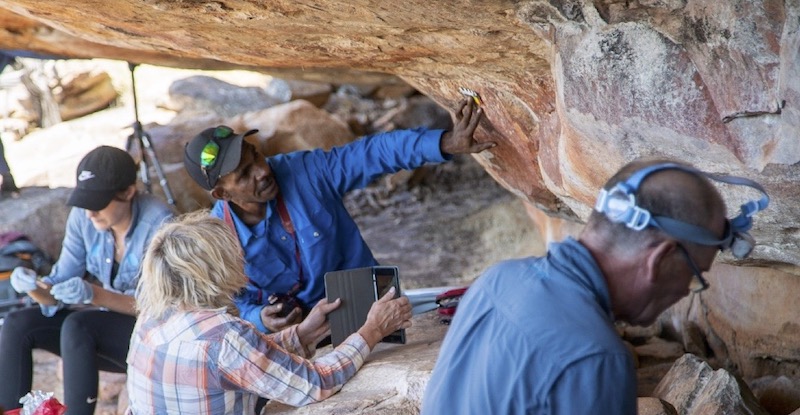
Dr Helen Green, Pauline Heaney, Lucas Karadada and Dr Damien Finch. Photo courtesy of the Balanggarra Aboriginal Corporation and Mark Jones.
The Rock Art Dating Project ended in April 2024 after 10 years of groundbreaking research. There will be several publications coming out this year about the outcomes of this research, and the current national lecture series Two Ways to See: A Rock Art Research Journey by Ian Waina and Andy Gleadow provide a personal account of the projects’ collaborative approach to determine the age of rock art sites on Kwini and Balanggarra Country in the East Kimberley.
A new research project is being developed which builds on this extensive research and will focus on the conservation of rock art. Stay tuned for further information about this exciting new project.
Museum and Art Gallery of the Northern Territory (MAGNT) Digitisation Project

From the archive: Scanned image of pencil drawing by Kay Breeden Williams, 1972 gifted to George Chaloupka.
The MAGNT Rock Art Digital Imaging Project, funded by RAA, is progressing well. Over 11,000 colour transparencies (CTs) from the George Chaloupka Rock Art Archive have been verified, digitised and documented to date. The Digital Imaging Officer (Rock Art) is now assessing the image quality for each CT as they undertake the slow process of colour management and creation of derivatives in accordance with the latest FADGI Guidelines.
Care and conservation measures are being applied to the collection of colour transparencies. This includes acid destruction testing (vinegar syndrome) on project commencement, rehousing into archival enclosures as required, and fine brush cleaning of each transparency prior to digitisation.
Two thirds of the overall colour transparencies, which include more that were subsequently located, still need to be verified with sites, or at the very least, location, clan affiliation and map sheet identified, cross referenced with reports, site index cards, and other records that exist and may help. These will be catalogued, digitised and entered into EMu, but will require further investigation later.
With a focus on searchability that is culturally relevant for people connected to sites documented in the Rock Art Archive, the Collection Manager (Rock Art) is working closely with MAGNT Registration staff on modifications required to MAGNT’s collection management system – EMu, to be able to effectively record each colour transparency, connect them to sites previously migrated across to EMu from the former database, as well as to sites that were not and that need to be created, cross referenced to reports, field notebook extracts, site recording forms and index cards.
All rock art reports have been rehoused into secure archival enclosures and listed. Many of these hold the clues for the CTs. A catalogue number and basic EMu record will be created for each of the CTs digitised, as well as for each of the audio recordings and reports. CT records will be enhanced once the images can be viewed in detail (next project), and include uploaded images of field book pages, site index cards and recording forms that have already been digitised.
The project is being conducted in a culturally appropriate, safe and secure manner, mindful of Indigenous protocols that already exist and are being developed by the various groups associated with the material. Restrictions on access and Indigenous Cultural and Intellectual Property rights apply.
The Collection Manager Rock Art received an invitation from the Bininj Kunwok Regional Language & Culture Centre to become a member of the recently formed Karrinahnan Mankarre Council, a representative advisory group made up of senior cultural leaders from Kakadu, West and Central Arnhem Land, seeking to create awareness about Indigenous Cultural and Intellectual Property (ICIP) issues in the region. The Collection Manager who has an enduring connection to the people and Country, participates in a voluntary capacity and brings along decades of experience working in galleries, libraries, archives, museums and universities around Australia. Two meetings have been held to date. More information about this important initiative can be found at the following site. https://bininjkunwok.org.au/mankarre-project/
We have also been receiving visitors from Kakadu and Kunwarddewardde (the Stone Country) who are interested in the project, and we will continue to be guided by and build on our relationship with them, the Traditional Owners and cultural authorities connected to the sites and knowledge documented in the Rock Art archive.
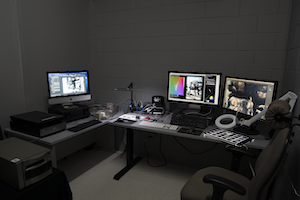
MAGNT Digital Imaging Studio. Photo: MAGNT.
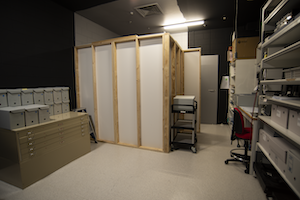
MAGNT Rock Art Archive. Photo: MAGNT.
ROCK ART RESEARCH FUNDING
Apply for rock art research funding
Rock Art Australia is dedicated to researching and protecting rock art across Australia by bringing science and Aboriginal and Torres Strait Islander cultural knowledge together. We promote the study of rock art and its context to understand the history of Australia and its significance in the global narrative of human origins.
We do this by providing funding for research which aligns with the following research themes:
- Interpret and understand Australia’s rock art and the people and cultures that produced it.
- Reconstruct past climate and environments.
- Understand the production and composition of Australia’s rock art.
- Understand the durability and resilience of the rock art and how to conserve it.
- Establish methodologies and treatments to protect and conserve rock art.
- Establish the antiquity of engraved and pigment art in Australia and understand its variability across space and time.
- Establish the chronology of human occupation in Australia in the context of archaeological and genetic data.
- Establish educational approaches to share and promote the research and cultural stories of rock art.
All project applications must follow the process set out in the Strategic Grant Guidelines, including the RAA Research and Engagement protocols. The application guidelines and form can be downloaded from https://rockartaustralia.org.au/what-we-do/apply-for-research-funding
Submission
All project applications must be submitted by email using the Strategic Grant Application Form with any necessary attachments. These are to be emailed as a single file (pdf or Word doc) named in this format: [SURNAME]-RAA-20[YEAR].
Applications are to be submitted to the RAA Office by emailing: grants@rockartaustralia.org.au
Key Dates
The next round of applications must be received by Tuesday 30 July 2024 to be considered at the next meeting of the Science Advisory Council (SAC) on 20 August. SAC approved grant applications will be reviewed by the RAA Board on 29 August. Applicants will be notified of the outcome by 13 September 2024.
Enquiries & Contact Details
General Enquiries: grants@rockartaustralia.org.au or the Chair of the RAA Science Advisory Council, Prof Andrew Gleadow: gleadow@unimelb.edu.au
Further information:
https://rockartaustralia.org.au/what-we-do/apply-for-research-funding
EVENTS
Two Ways to See National Lecture Series
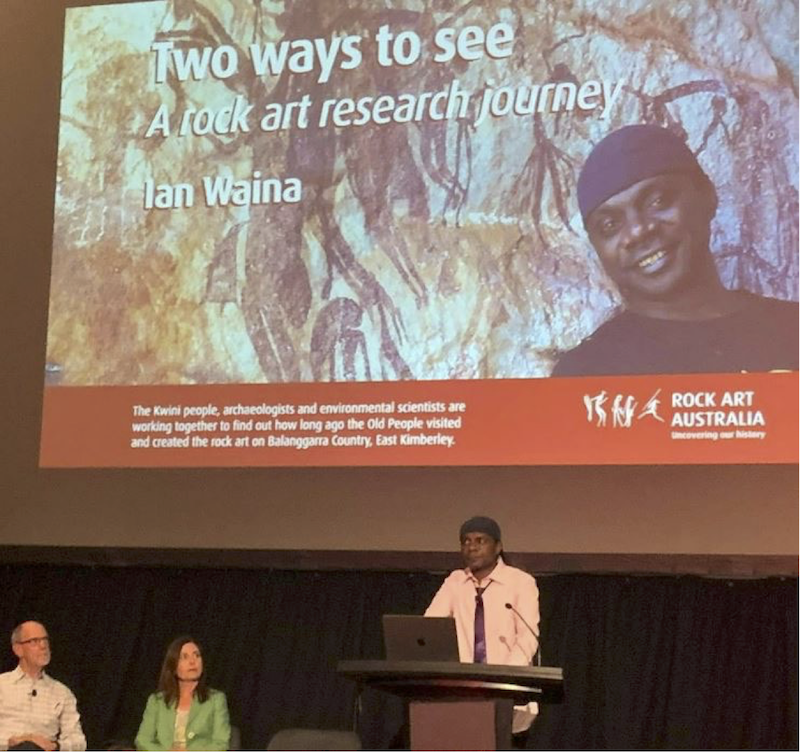
Western Australian Museum Boola Bardip, in the Stan Perron Treasures Gallery, Hackett Hall. Photo: Annie Carson.
In February we commenced the national ‘Two Ways to See: A Rock Art Research Journey’ lecture series and book promotion presented by Traditional Owner Ian Waina and Prof. Andy Gleadow. We are thrilled with the reception we have received, filling venues in both Perth and Sydney to capacity.
There are many people to thank for making both events such a great success. Thank you to all those who attended for your interest and engaging Q & A sessions. Thank you to those that so generously donated and continue to support RAA. Thank you to the venue staff at the Western Australian Museum (WAM) Boola Bardip in Perth and the Art Gallery of New South Wales (AGNSW) in Sydney for your gracious hospitality.
Boorloo Perth

Annie Carson (WAM), Ian Waina, Bernadette Waina and Dorothy Djanghara discuss plant samples collected by Ian Crawford in the 1970s. Photo: Samantha Hamilton.

Ian looking at two paintings created by his father of the saltwater beliefs and the freshwater beliefs with Bernadette and Dorothy providing the different language names for the ‘gods’ in the paintings. Photo: Annie Carson.
As part of our time on Whadjuk Noongar Country in Boorloo (Perth) preparing for the first ‘Two ways to see’ lecture, we spent time with Annie Carson, Curator Anthropology and Archaeology at the WAM Collections and Research Centre. Annie shared paintings created by Ian Waina’s father Kevin Waina and images, specimens, and objects from Dr Ian Crawford’s collection.
Ian Waina was named after Dr Ian Crawford because of the deep connection Dr Crawford had with Ian’s family and the wider Kalumburu community over decades. We also visited Dr Crawford at his home. Dr Crawford shared many stories and research information with Ian and they both exchanged the books they had authored.
Dr Crawford was WAM’s first Curator of Anthropology & Archaeology (appointed in 1961). His photographic collection Crawford collection – West Kimberley images 1961-1993 | Western Australian Museum, includes around 30,000 images taken on his many field trips to the Kimberley between 1961 and 1993.
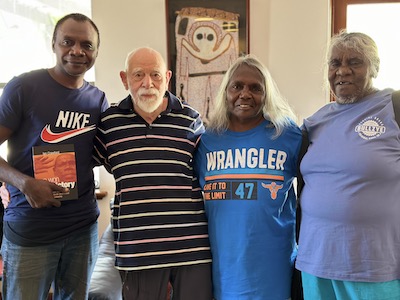
Ian Waina, Dr Ian Crawford, Bernadette Waina and Dorothy Djanghara. Photo: Samantha Hamilton.
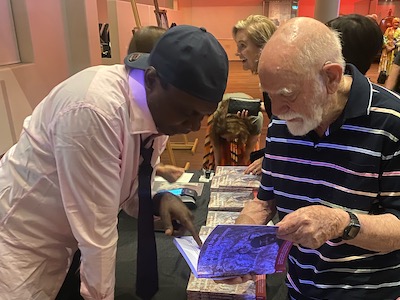
Ian Waina gives Dr Ian Crawford a copy of his book. Photo: Pauline Heaney.
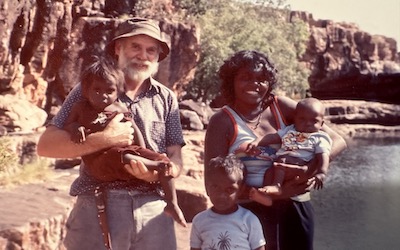
A photograph pinned on Dr Ian Crawford’s wall of Ian as a baby in Kalumburu with his mother Bernadette Waina and siblings.
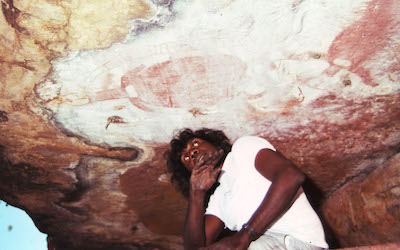
A photograph of Ian’s father Kevin Waina taken by Dr Ian Crawford in 1987.
During this preparation trip we also visited long-term friend Father Anscar McPhee a Benedictine monk who spent 28 years living among the people of Kalumburu. Father Anscar documented many rock art sites and oral histories from the older community members. Father Anscar showed Ian many photo albums about these sites and told Ian how to access notes taken by him through the Broome Archdiocese.
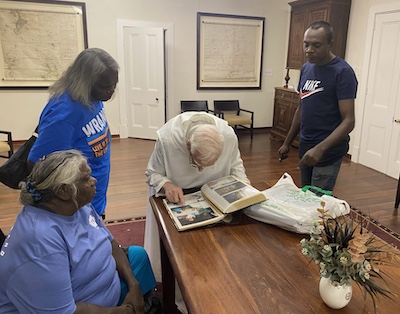
Father Anscar showing the group many of his photo albums of rock art and people from the community in Kalumburu. Photo: Pauline Heaney.
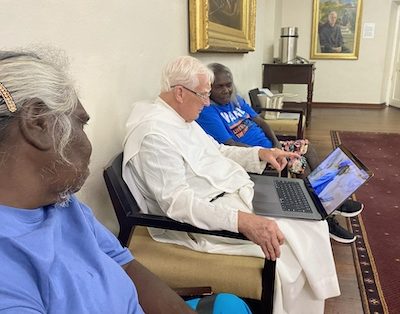
Bernadette and Dorothy show Father Anscar film footage of the rock art dating research outcomes and tell him about the community’s involvement in the project. Photo: Pauline Heaney.
Gadigal Sydney
During the Sydney leg of the lecture series, RAA CEO Samantha Hamilton had the opportunity to meet with university researchers, government organisations, Traditional Owners and donors, who all provided valuable insights into the needs and areas of interest in rock art research in NSW. We look forward to returning to Sydney and continuing conversations and extending our NSW networks.
Naarm Melbourne
International Symposium of Archaeometry 2024
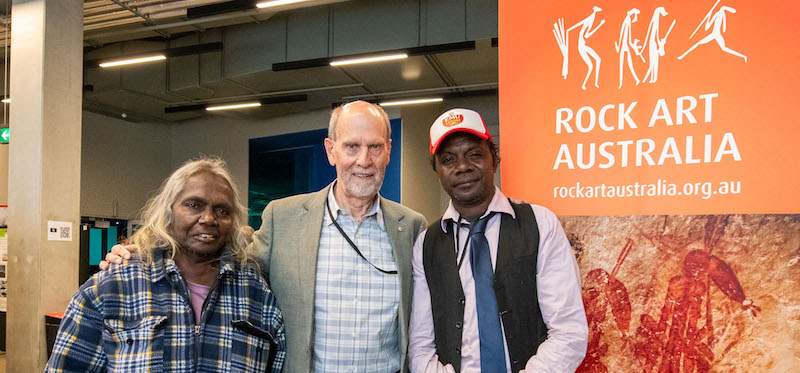
Bernadette Waina, Andy Gleadow, and Ian Waina at the International Symposium of Archaeometry, 2024 Naarm. Photo: Courtesy of ISA.
As platinum sponsor for the 44th annual International Symposium of Archaeometry (ISA) we were delighted to support the keynote presentation by Prof. Andy Gleadow and Ian Waina, the rock art session, and a conference event. We were proud to share information about the Rock Art Dating Project with conference delegates, including international researchers, students and members of the public.
The ISA symposium, held in Australia for the first time from 27-31 May, was hosted by the Australasian Research Cluster for Archaeological Science (ARCAS). We congratulate Professor Rachel Popelka-Filcoff, RAA’s Minderoo Chair in Archaeological Science at the University of Melbourne, and her team for the organisation of the successful event.
Exclusive screening of ‘Two ways: The Kimberley rock art legacy’
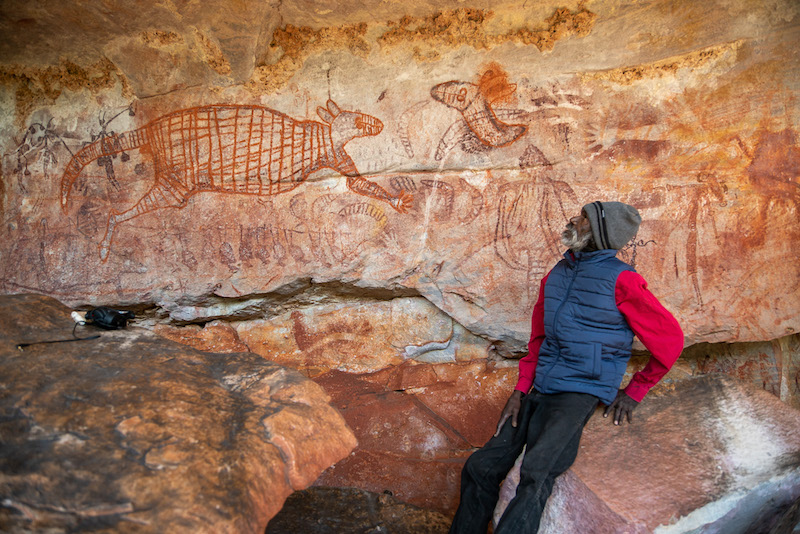
Elder Augustine ‘Boornoornoor’ Unangho, pictured below, looking up at the Pundawar Manbur art panel, Drysdale River National Park, WA. Photo: Mark Jones.
Over 400 people attended the three free screenings of ‘Two ways: The Kimberley rock art legacy’, during National Reconciliation Week, at the Australian Centre of Moving Image (ACMI) in Federation Square on 29 May 2024. This documentary by film maker Mark Jones shares outcomes of the Rock Art Dating Project and other rock art research, through interviews, contemporary and archival footage. The documentary reveals the enduring narratives of art, climate change, and human resilience spanning over 60,000 years, through traditional knowledge and western science.
We also hosted a panel session moderated by film maker Mark Jones together with Prof. Andy Gleadow and Traditional Owners and family members of Elder Augustine (Augie) ‘Boornoornoor’ Unangho. Augie was instrumental in the success of the Rock Art Research Project, and we would like to thank him for his collaboration, permissions, and enthusiasm to engage in two way knowledge exchange. Thank you also to Augie’s children Ainslie Donation and Lucas Karadada and Ian and Bernadette Waina for making the long journey to Melbourne to present on the panel and celebrate this long-standing rock art research partnership.
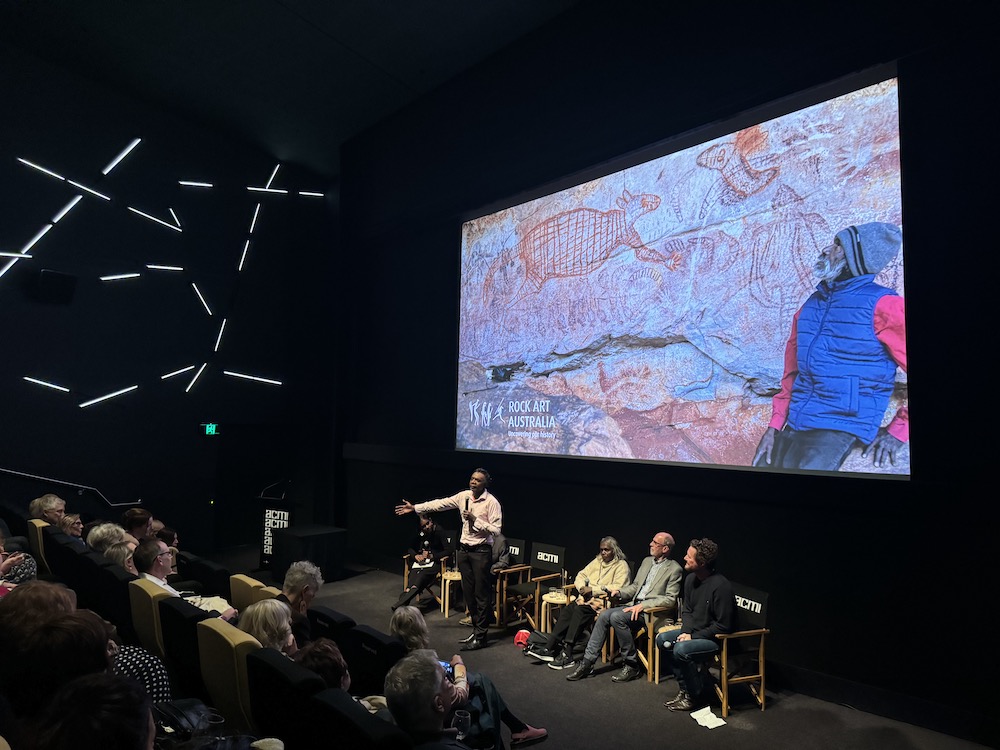
Panel discussion led by Filmmaker Mark Jones (far right) Photo: Joseph Kiely.
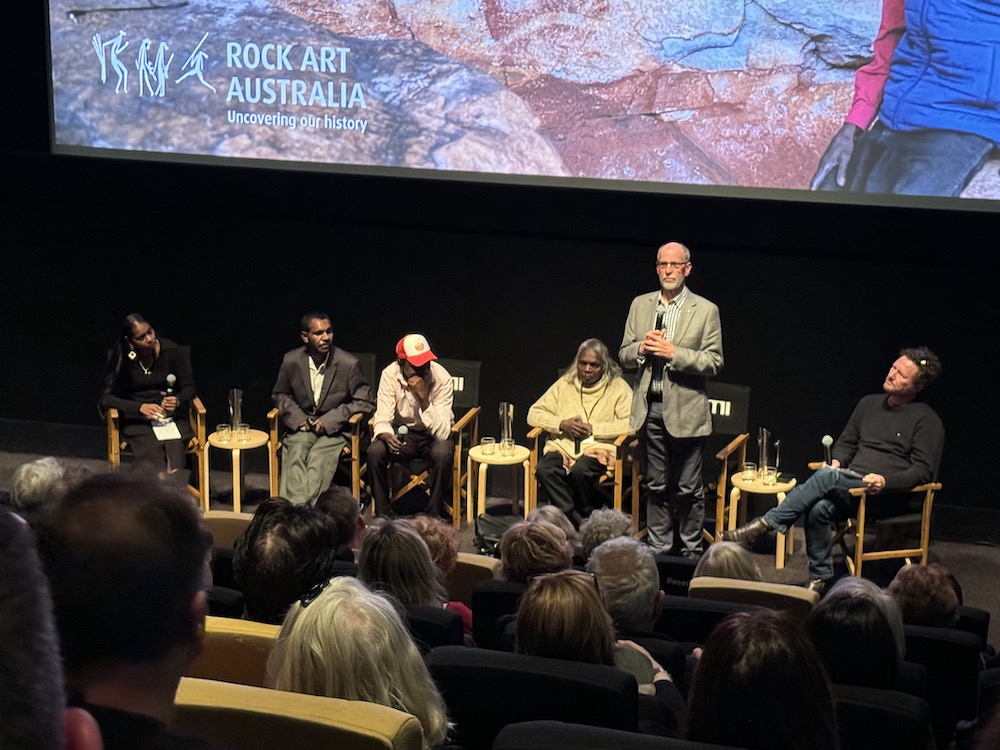
Panelists from l-r: Ainslie Donation, Lucas Karadada, Ian Waina, Andy Gleadow. Photo: Joseph Kiely.
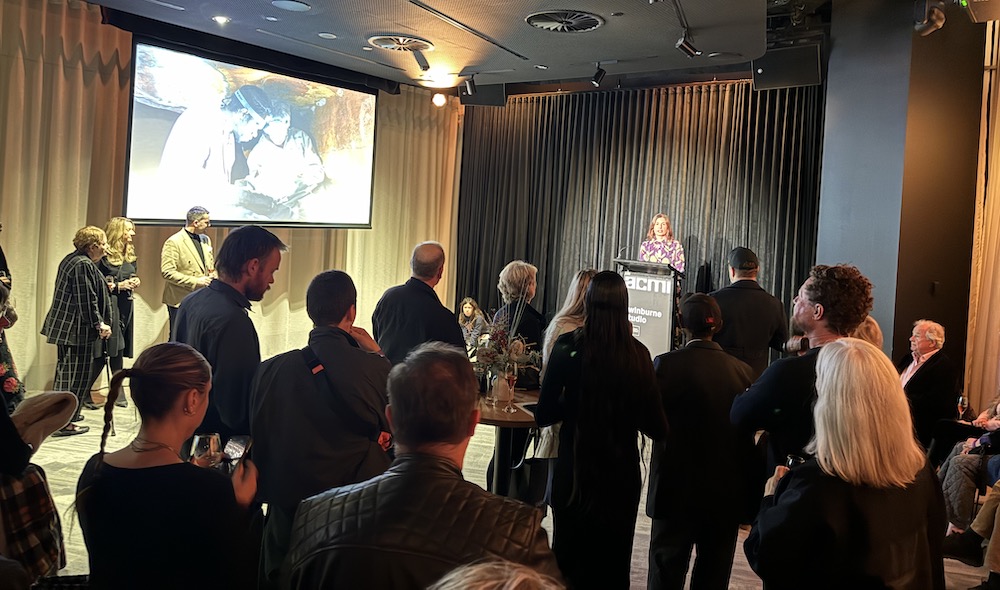
Welcome address by Samantha Hamilton, RAA CEO. Photo: Joseph Kiely.
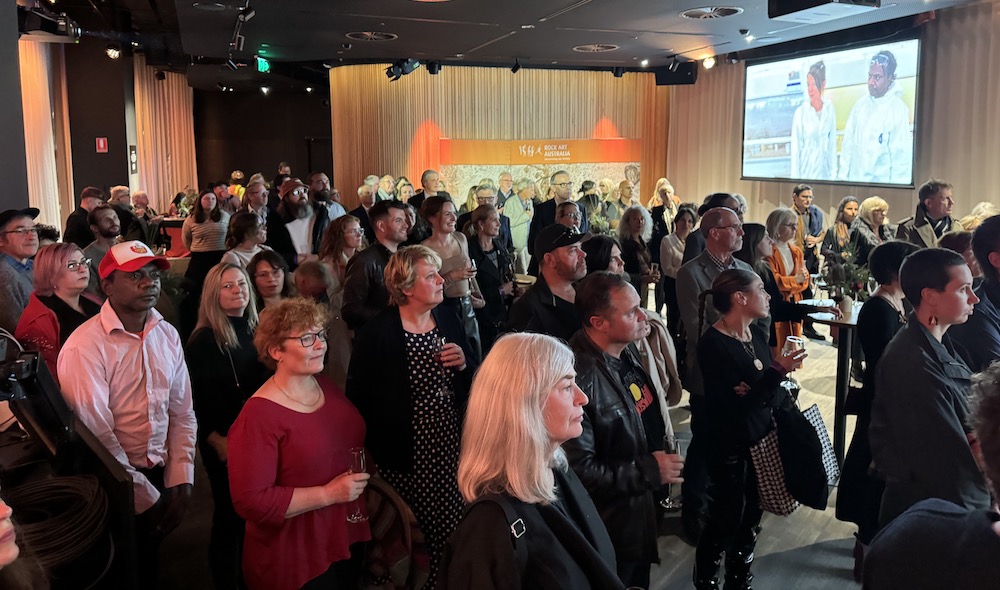
Audience at pre-screening reception. Photo: Joseph Kiely.
2024 AIATSIS Summit convened in partnership with First People’s Assembly of Victoria, in Naarm Melbourne
Thank you to the Australian Institute of Aboriginal and Torres Strait Islander Studies (AIATSIS) for inviting us to present about the Rock Art Dating Project and contribute to the theme of this year’s summit Celebrating Indigenous Brilliance: Then and Now. It was great to connect with many of the delegates and we look forward to continuing conversations and extending our research networks and partnerships with communities around Australia.
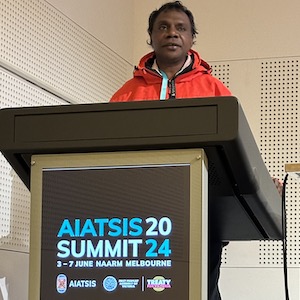
Ian Waina Photo: Samantha Hamilton.
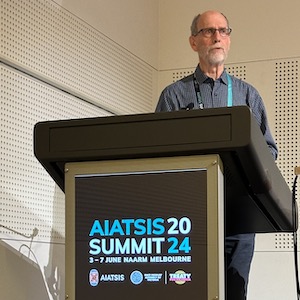
Prof Andy Gleadow. Photo: Samantha Hamilton.
Rock Art Australia visits Melbourne Indigenous Transition School (MITS)
It was such a joy to spend a morning with the Year 7 students and staff at the Melbourne Indigenous Transition School (MITS). Ian Waina and Prof. Andy Gleadow shared our two ways approach to rock art research and the children were engaged for over an hour, asking many questions.
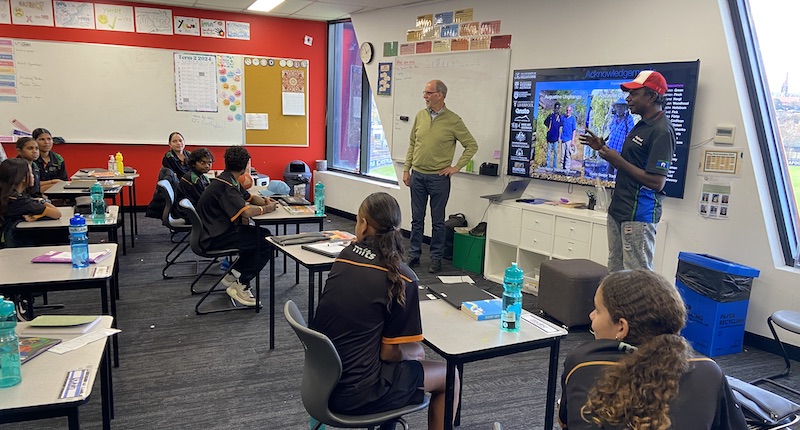

Photos: Edward Tudor, CEO MITS
Please refer to our website and social media platforms for further dates and destinations of the national lecture series, and opportunities to meet with RAA staff in person in Broome, Darwin, Canberra, Perth, Adelaide, Hobart, and Brisbane.
Or contact us directly by emailing hello@rockartaustralia.com.au
BOOKS
We would like to share information about the following books:
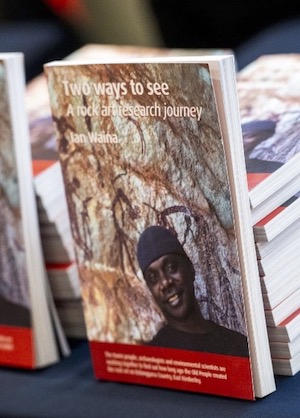
Two Ways to See: A Rock Art Research Journey by Ian Waina
The Forgotten Art of ‘Flash Jack’ Barrymore – Works on Paper, Painted Pearl Shells and Engraved Boab Nuts, from the first half of the 20th Century. By Kim Akerman with Bruno Jordanoff
You can buy the book at Hesperian Press Real Australian Books
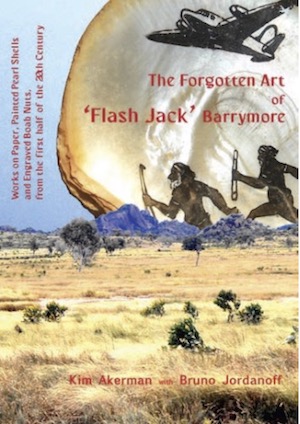

Scales of the Serpent. Kimberley Pearl Shell in Aboriginal Australia By Kim Akerman
Deep-Time Images in the Age of Globalization. Rock Art in the 21st Century
